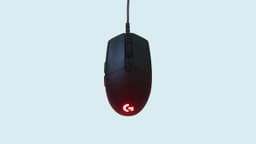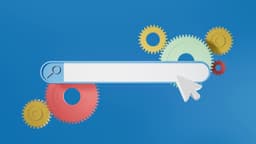Customer Acquisition Cost (CAC)
Customer Acquisition Cost (CAC) measures how much a company spends to acquire a new customer. This metric is fundamental for understanding resource allocation, scalability, and efficiency. It reflects the investment necessary to gain customers, offering insights into a company’s profitability and sustainability.
CAC is calculated by dividing the total costs of acquiring new customers, which includes marketing and sales expenses, by the number of customers acquired during that period. For example, if a business spends \$100,000 on marketing and acquires 1,000 new customers, the CAC is \$100.
Why is CAC Important?
Understanding your CAC is crucial for various reasons:
-
Profitability: CAC should be significantly less than the profit earned from a customer over their lifetime (Customer Lifetime Value, LTV). If CAC exceeds LTV, the business model may need reevaluation.
-
Budgeting: Knowing the average CAC helps businesses budget future marketing and sales expenses more effectively.
-
Comparison: CAC provides a benchmark for comparing your business's performance to industry standards or competitors.
Factors Affecting Customer Acquisition Cost (CAC)
Several factors influence CAC, which businesses can optimize to improve marketing strategies and returns:
1. Industry Dynamics
- Competition: Increased competition often leads to higher marketing expenses, raising CAC.
- Market Saturation: In saturated markets, businesses must work harder to attract customers, resulting in higher CAC.
- Entry Barriers: Industries with high entry barriers may initially have higher CAC due to lower competition but could stabilize over time.
2. Target Market Specifics
- Market Size: A broader market segment may require more extensive marketing campaigns, increasing CAC.
- Market Demographics: Targeting specific demographics may require tailored strategies, affecting costs.
- Customer Behavior: Understanding customer behavior is vital, as segments needing extensive nurturing can drive up CAC.
3. Marketing Channels
- Channel Efficacy: The effectiveness of chosen marketing channels correlates with CAC levels. Ineffective channels incur wasted expenses.
- Digital vs. Traditional: Digital marketing channels usually yield lower CAC than traditional media due to more precise targeting.
- Multi-Channel Strategy: A diverse channel strategy can enhance reach but necessitates monitoring to validate costs.
4. Product/Solution Complexity
- Education Requirement: Products requiring significant customer education can lead to longer sales cycles and higher CAC.
- Value Perception: High perceived value might justify a longer acquisition process, influencing CAC.
- Customization Needs: Extensive customization can increase consultations, raising CAC.
5. Sales Strategies
- Sales Cycle: Longer sales cycles often mean more interactions, which can increase costs.
- Incentives and Discounts: While these may lower initial barriers for customers, they can impact overall LTV.
- Sales Team Efficiency: A skilled sales team can reduce CAC by closing leads more efficiently.
6. Brand Recognition and Reputation
- Brand Strength: Strong brands may acquire customers more easily and cost-effectively.
- Public Perception: Negative press can increase CAC as restoration of trust requires spending.
7. Economic Factors
- Economic Climate: Economic downturns can lead to higher CAC as consumers reduce spending.
- Market Trends: Shifting trends can alter acquisition costs for businesses.
Understanding these factors enables businesses to strategize effectively and optimize acquisition processes.
How to Lower Customer Acquisition Cost
Reducing CAC is essential for improving profitability and enhancing the customer journey. Consider these practical approaches to lower your CAC:
1. Optimizing Conversion Rates
- Landing Page Refinement: A/B testing can identify effective designs and copy for better conversion.
- Clear Calls-to-Action (CTAs): Ensure CTAs are visible, compelling, and accessible for users.
- Enhanced Product Descriptions: Offering thorough product descriptions can facilitate quicker customer decisions.
2. Leveraging Inbound Marketing
- Content Marketing: Providing valuable content can attract prospects and build trust, lowering CAC over time.
- Search Engine Optimization (SEO): Effective SEO strategies enhance online visibility and reduce dependence on paid methods.
- Community Engagement: Engaging with potential customers fosters loyalty and can lead to organic acquisition at lower costs.
3. Prioritizing Customer Retention
- Enhanced Customer Service: Providing excellent service can increase satisfaction, resulting in repeat business and referrals.
- Loyalty Programs: Rewarding repeat purchases keeps customers engaged and encourages referrals.
- Personalized Experiences: Data-driven personalization enhances customer loyalty and repeat purchases.
4. Analyzing Performance Metrics
- Data-Driven Insights: Utilize analytics to identify effective channels and strategies.
- Continuous Improvement: Use data to refine marketing efforts and optimize spending.
- Cost Tracking: Monitor costs throughout marketing and sales processes to identify efficiencies.
5. Referral Marketing
- Customer Advocacy: Encourage satisfied customers to refer others, as referrals typically have lower CAC.
- Affiliate Programs: Establish partnerships to expand reach and acquire customers at a controlled cost.
6. Technology Integration
- Automated Tools: Automation can streamline marketing and sales, reducing manual errors and saving time.
- AI and Machine Learning: Technologies like AI chatbots can provide immediate customer support efficiently, lowering CAC.
Customer Acquisition Cost (CAC) is crucial for measuring growth and profitability. By tracking and improving CAC, businesses can achieve sustainable growth.












